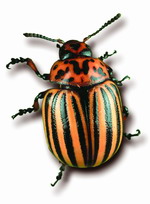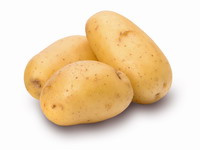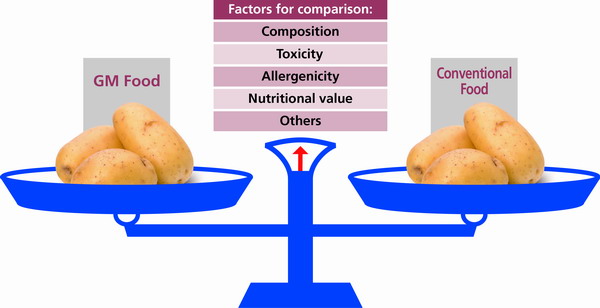No food is completely free of risk, GM food is no exception
Since food is essential to life, people often demand a very high standard of food safety nowadays People are cautious when advanced technology like genetic engineering is employed in the production of food or even feed. In our previous issues of GM Food Newsletter, we clearly pointed out that genetically modified (GM) foods that have passed safety assessment are considered to be safe for human consumption. In fact, the World Health Organization (WHO) also supported such view. Nevertheless, some people are still worried and remain skeptical on the safety of these GM foods. In this issue, we will further discuss the safety aspect of GM food.
Conventional foods are totally free of risk?
The answer is definitely "No" – It is clear that conventional foods can have different types of risks. To name a few, natural toxins such as glycoalkaloids and cyanide can be found in potato and cassava respectively; some coral reef fishes are known to harbour the lethal ciguatera toxin; microorganisms with significant zoonotic potential e.g. Salmonella and E. coli O157 can be found in raw meat; gluten present in wheat may trigger allergic reactions in some people; aflatoxins are known to be human carcinogen and existed in peanuts contaminated with fungus. Hence, it is clear that the risk of consuming conventional foods is not zero. Nevertheless, through effective risk control measures from the source to the whole chain of supply, the risk can be minimized.
What is the concept of the Comparative Approach?
The Comparative Approach (previously referred to as "Substantial Equivalence") is the core concept developed to assess the safety of GM foods with the understanding that conventional foods are not completely free of risk. For previous discussions, you may refer to our earlier issues of GM Food Newsletter
http://www.cfs.gov.hk/english/programme/programme_gmf/programme_gmf_er_res1.html

Figure 1: Colorado Potato Beetle
Here, let us explain this concept with the example of GM potato. We know that conventional potatoes contain natural toxins called glycoalkaloids. Unless the potato has signs of greening or sprouting, these natural toxins usually exist in low level in potato and unlikely to pose adverse effects in humans upon consumption. During the development of Colorado Potato Beetle resistant potatoes (which are genetically modified to be resistant to attack by Colorado potato beetle – a major insect pest to potato, Figure 1), the cry3A gene from the bacterium Bacillus thuringiensis was introduced into the potato genome to give the potato the insecticidal property. Some people raised concerns about the safety of these GM potatoes – whether the insertion of the new gene would result in an increase in the toxins level or even introduce new toxins to the potatoes? In order to ensure such genetic modification will not introduce additional risk to the potato, a systematic safety assessment was performed utilizing the concept of the comparative approach.

Under such safety assessment, the GM potato was compared to conventional potato. A list of key factors such as characteristics of donor and host organisms, composition, dietary intake, nutritional data, toxicological data, allergenicity properties etc. were investigated in search of potential risks that may arise as a result of genetic modification (Figure 2). For example, the levels of glycoalkaloids were compared between modified and conventional potatoes. The GM potato would only be approved when assessors were completely satisfied that the risks found in them did not exceed that already exist ed in their conventional counterparts (e.g. in this case the glycoalkaloids level in the GM version did not exceed that of conventional potato, no new allergens emerged and the nutritional value of the potato preserved). Through such systematic assessment, we can be confident that approved GM foods are as safe as their conventional counterparts. The concept of comparative approach is well accepted internationally in assuring the safety of GM food.
Approved GM food s are not completely free of risk?
It is true that approved GM foods, like their conventional counterparts, are not completely free of risk. Using the example of GM potato mentioned above, it is likely that the GM Colorado potato beetle resistant potato may still contain similar amount of natural toxins as their conventional counterparts. However, does it mean these approved genetically modified or conventional potatoes cannot be safely consumed? Obviously not, as millions of approved genetically modified potatoes have been consumed safely worldwide! With such understanding, we can be confident that the approved GM foods are equally safe as their conventional counterparts. Indeed, approved GM foods are now generally recognized as safe by food safety authorities.
Conclusion
Although risks can still exist in both conventional and approved GM foods, they can be safely consumed by the public. The current safety assessment of GM foods based on the principle of the comparative approach is well recognized internationally for ensuring approved GM foods are equally safe as their conventional counterparts.
Figure 2: A simplified illustration of safety assessment of GM food utilizing the concept of the comparative approach
